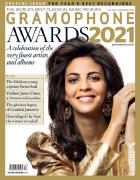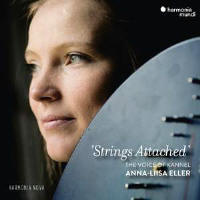Texte paru dans: / Appeared in: |
|
|
Outil de traduction (Très approximatif) |
|
|
Reviewer:
Philip Kennicott
The kannel, Estonia’s national instrument, is closely related to other box zithers common in the Baltic region, including the Russian gusli and the Finnish kantele. The concert instrument heard on this recording is a modern expansion of the folk instrument. It is tuned chromatically rather than diatonically, and has a four-octave range and a great many more strings than the kannel used in folk music. Anna-Liisa Eller proves the adaptability of the concert instrument to a wide range of repertoire on this engaging disc, which includes not only Baroque and Renaissance works played on the kannel but a virelai by Machaut transcribed for psaltery (a closely related instrument) and improvised interludes performed on an electronic kannel. The challenge in the Baroque and Renaissance works is adapting the sustained tones of the instrument to faster-moving and ornamented passages, where things tend to get a bit blurry. But the instrument’s relatively short decay and Eller’s judicious choice of tempos mitigate that. The kannel produces a robust sound, and listeners new to the instrument might well guess they are listening to a slightly sweeter harpsichord without felts to damp the strings. Eller’s repertoire choice underscores the sonic affinities of the two instruments, with music by Rameau, Louis Couperin, Frescobaldi, Byrd and Dowland. In Byrd’s Lord Willoughby’s Welcome Home we encounter one of the few infelicities of the kannel impersonating a keyboard instrument: a slightly lopsided extended trill. Otherwise, the ornaments all translate, especially the mordents and short trills, which are more explosive and delimited. The contemporary works and improvisations are a mixed bag. Helena Tulve’s Silmaja responds to the instrument’s sonorities with a musical narrative made up of short, gestural bursts of sound. It is episodic but effective. Eller’s improvisations help link the other works, sometimes with thematic connections, including an anticipatory reference to Dowland’s Lachrimae before her sensitive rendition of the famous lament. The electronic kannel produces an interesting effect, moody and immersive, but it seems to be from another universe and might well belong on its own disc. |
|




